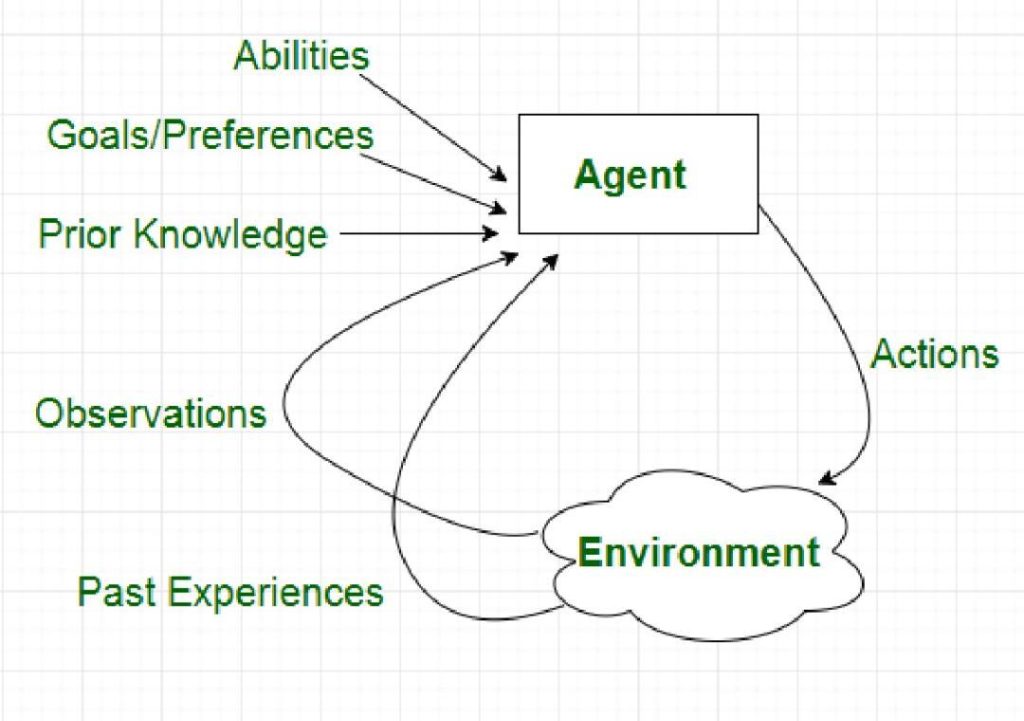
What role do reactive and learning agents play in AI?
Artificial intelligence (AI) has become an integral part of our daily lives, from virtual assistants like Siri and Alexa to self-driving cars and intelligent home devices. At the heart of these intelligent systems are AI agents, which enable machines to make decisions, learn from their environment, and adapt to new situations. In this blog post, we’ll explore the roles of reactive and learning agents in AI, and how understanding these concepts can help you build smarter, goal-oriented systems.
Reactive Agents: Instant Response to Stimuli
Reactive agents are the simplest type of AI agent, designed to respond instantly to stimuli or inputs. They don’t have any memory or learning capabilities, and their actions are solely based on the current state of the environment. Think of a smart light bulb that turns on when you enter a room – this is a classic example of a reactive agent.
Reactive agents are typically used in situations where the environment is relatively stable, and the agent only needs to respond to specific events. For instance, a thermostat that adjusts the temperature based on the time of day or outdoor weather conditions is a reactive agent.
The advantages of reactive agents include:
- Simple implementation: Reactive agents are easy to design and implement, as they don’t require complex algorithms or learning mechanisms.
- Fast response times: Reactive agents can respond quickly to stimuli, making them suitable for applications where speed is critical.
- Low computational requirements: Reactive agents don’t require significant computational resources, making them energy-efficient.
However, reactive agents also have some limitations. They can’t adapt to changing environments or learn from their experiences, which can lead to inflexibility and limited problem-solving capabilities.
Learning Agents: Evolving through Feedback
Learning agents, on the other hand, are designed to evolve over time by improving their behavior through feedback. They can learn from their environment, adapt to new situations, and even generalize their knowledge to new contexts. Learning agents are typically used in situations where the environment is dynamic, and the agent needs to adapt to changing conditions.
Learning agents can be further divided into two subcategories:
- Model-based learning agents: These agents use a mental model of the environment to make decisions. They learn by exploring the environment, updating their model, and refining their decisions based on feedback.
- Model-free learning agents: These agents don’t use a mental model of the environment. Instead, they learn through trial and error, using reinforcement learning mechanisms to improve their behavior.
The advantages of learning agents include:
- Adaptability: Learning agents can adapt to changing environments and learn from their experiences.
- Problem-solving capabilities: Learning agents can solve complex problems and generalize their knowledge to new situations.
- Improved decision-making: Learning agents can make more informed decisions based on their learning and feedback.
However, learning agents also have some limitations. They require significant computational resources, can be slow to learn, and may not always generalize well to new situations.
Real-World Applications of Reactive and Learning Agents
Reactive and learning agents have numerous real-world applications across various industries. Here are a few examples:
- Robotics: Reactive agents are used in robotics to control movements and responses to environmental stimuli, while learning agents are used to teach robots new skills and adapt to changing environments.
- Gaming: Learning agents are used in game development to create intelligent NPCs (non-player characters) that can learn and adapt to the player’s behavior.
- Autonomous vehicles: Learning agents are used in autonomous vehicles to enable them to adapt to changing traffic conditions and learn from their experiences.
- Healthcare: Learning agents are used in healthcare to analyze medical data, diagnose diseases, and develop personalized treatment plans.
Conclusion
Reactive and learning agents are essential components of AI systems, enabling machines to make decisions, learn from their environment, and adapt to new situations. While reactive agents are simple and effective in specific situations, learning agents offer greater adaptability and problem-solving capabilities. Understanding the roles of these agents can help you build smarter, goal-oriented systems that can learn and adapt to changing environments. By combining the strengths of reactive and learning agents, you can create more sophisticated AI systems that can improve decision-making, automate tasks, and enhance overall performance.
Source






